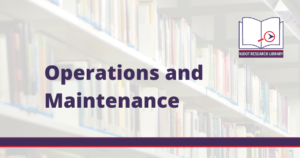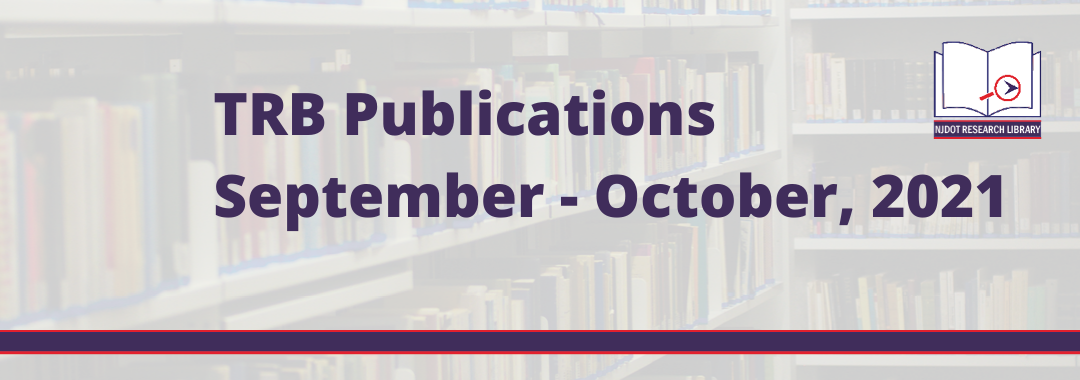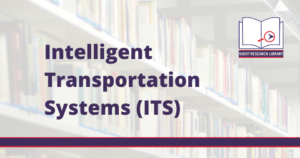The following is a list of research published by the Transportation Research Board (TRB) between September 1, 2021 and October 31, 2021. Current articles from the TRB may be accessed here.


Development of a Novel Intelligent Speed Adaptation System Based on Available Sight Distance
Effects of Pedestrian Crossing on Minor Road Capacity at Two-Way Stop-Controlled Intersections
Roundabouts in the United States: An International Comparison of Illuminance Requirements and Costs
Construction of an Electrically Heated Asphalt Road Based on Ribbon Technology
Rational Basis for Light Emitting Diode Street Lighting Retrofit Luminaire Selection
Cable Median Barrier Effect on Commercial Vehicle Crossover Crashes
Decrease in Viscosity Caused by Agglomeration and Particle Dispersion in Cement–Fly Ash Suspensions
Stabilization of the Highway Slope using Recycled Plastic Pins
Performance Evaluation of Different Insulating Materials using Field Temperature and Moisture Data
New Turner-Fairbank Alkali-Silica Reaction Susceptibility Test for Aggregate Evaluation
Progressive Development of the Perched Water Zone in Highway Slopes Made of Highly Plastic Clay
Improvement of Strength and Volume-Change Properties of Expansive Clays with Geopolymer Treatment
Slip Coefficient Testing of ASTM A709 Grade 50CR and Dissimilar Metal Bolted Connections
Effect of Nano-Silica on the Properties of Concrete and Its Interaction with Slag
Hydration and Early Age Properties of Cement Pastes Modified with Cellulose Nanofibrils
Role of Carbon Nanofiber on the Electrical Resistivity of Mortar under Compressive Load
Durability of Concrete Superficially Treated with Nano-Silica and Silane/Nano-Clay Coatings
Cellulose Nanocomposites for Performance Enhancement of Ordinary Portland Cement-Based Materials

The Forecast Is for Better Transportation Management
Vehicle Delay Estimation at Signalized Intersections Using Machine Learning Algorithms
Field Theory for Some Traffic Phenomena and Fundamental Diagram
Spatial Roadway Condition-Assessment Mapping Utilizing Smartphones and Machine Learning Algorithms
New Travel Time Reliability Methodology for Urban Arterial Corridors
Fuel Consumption Intersection Control Performance Index
Collection, Analysis, and Reporting of Kentucky Traffic Incident Management Performance
Efficient Road Crack Detection Based on an Adaptive Pixel-Level Segmentation Algorithm
Deriving Operational Traffic Signal Performance Measures from Vehicle Trajectory Data
Deep Learning to Detect Road Distress from Unmanned Aerial System Imagery

Use of the Pavement Surface Cracking Metric to Quantify Distresses from Digital Images
Meso-Scale Kinematic Responses of Asphalt Mixture in Both Field and Laboratory Compaction
Field Density Investigation of Asphalt Mixtures in Minnesota
C-FLEX Advanced Finite Element Analysis Program for Flexible Pavement Analysis and Design
Results of the 10-Year Arizona Quiet Pavement Pilot Program
Detection of Pavement Maintenance Treatments using Deep-Learning Network
Pavement Distress and Debris Detection using a Mobile Mapping System with 2D Profiler LiDAR
Highway Asset and Pavement Condition Management using Mobile Photogrammetry

Drivers and Barriers of Households’ Carsharing Decisions
Measuring Changes in Multimodal Travel Behavior Resulting from Transport Supply Improvement
Equity-Oriented Criteria for Project Prioritization in Regional Transportation Planning
Social Network Approach to Analyze Stability and Variability of Travel Decisions

State of Emergency: What Transportation Learned from 9/11
Cyber-Resilience: A 21st-Century Challenge
Understanding Urban Commercial Vehicle Driver Behaviors and Decision Making
Use of Exclusive and Pooled Ridehailing Services in Three Mexican Cities
Transport Networking Companies Demand and Flow Estimation in New York City
Impacts of School Reopening on Variations in Local Bus Performance in Sydney
Real-Time Twitter Data Mining Approach to Infer User Perception Toward Active Mobility
Spatio-Temporal Influence of Extreme Weather on a Taxi Market
Transportation Barriers among Immigrant Women Experiencing Intimate Partner Violence
Simulation of Potential Use Cases for Shared Mobility Services in the City of Ann Arbor

Emergency Evacuation: 20-Year Evolution of Research and Practice
Retooling Emergency Management: How Caltrans Transformed and Transcended the State of the Practice
Is It Safe Yet? Fear and What Can Be Done to Mitigate It
Interoperability of Public Safety Communications: An Elusive Goal
Bridge and Tunnel Security Resources
Spatiotemporal Analysis of Highway Traffic Patterns in Hurricane Irma Evacuation
Assessment of Commercial Truck Driver Injury Severity as a Result of Driving Actions
Driving Maneuvers Detection using Semi-Supervised Long Short-Term Memory and Smartphone Sensors
Topic Models from Crash Narrative Reports of Motorcycle Crash Causation Study
Examining Freeway Bottleneck Features During a Mass Evacuation
Review of Post-Fire Inspection Procedures for Concrete Tunnels
Measuring Congestion and Reliability Impacts of Safety Projects











